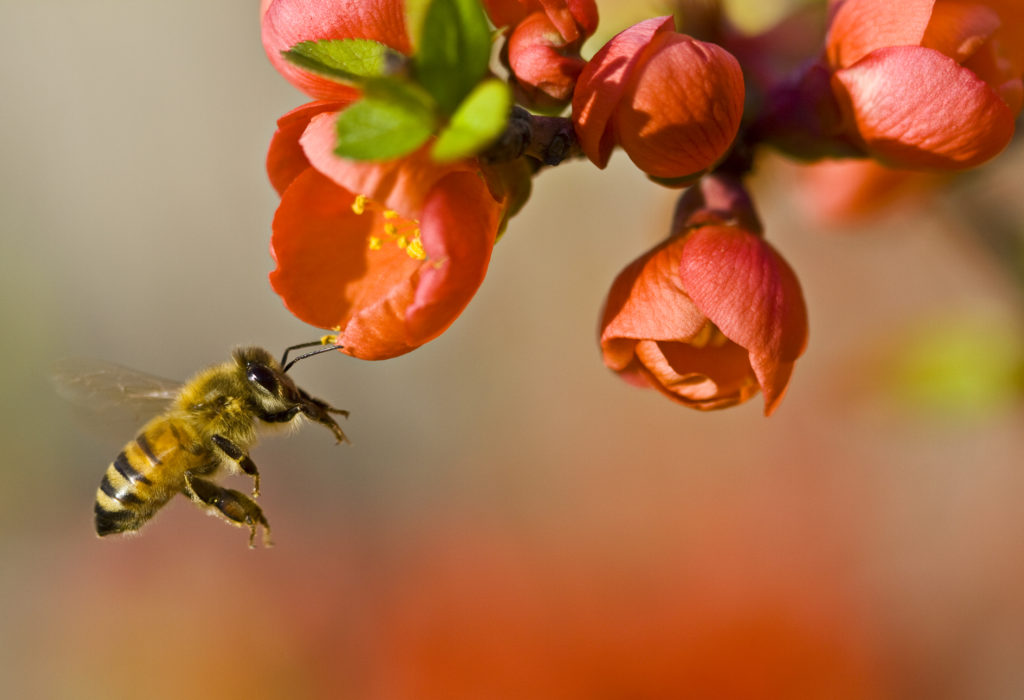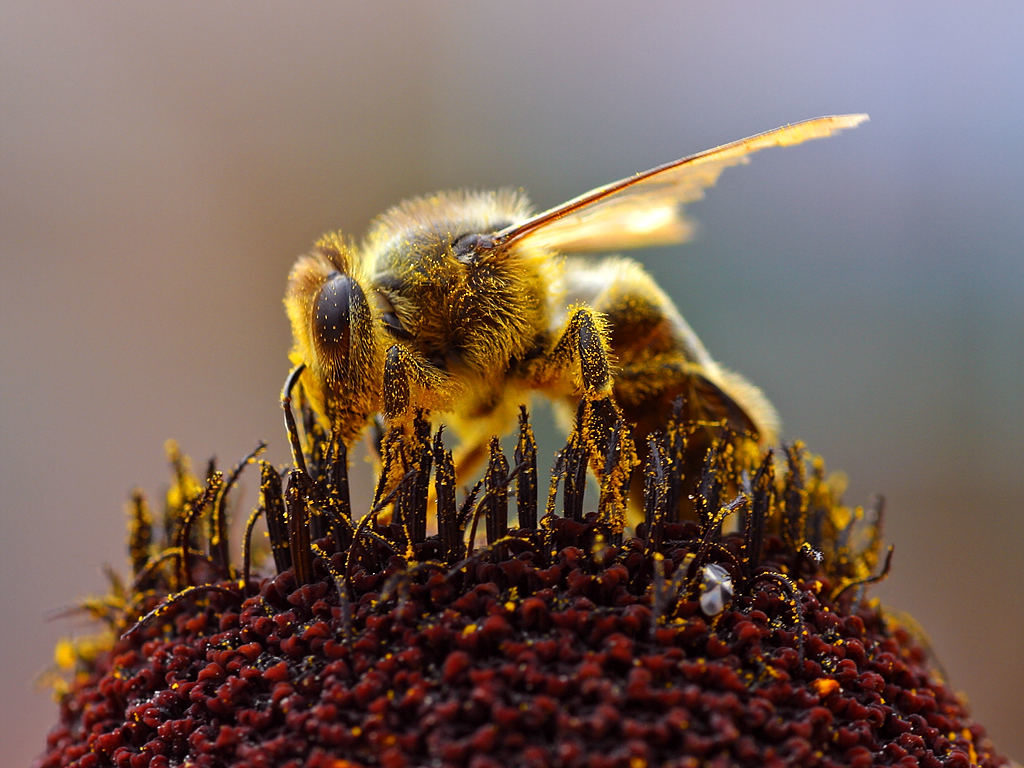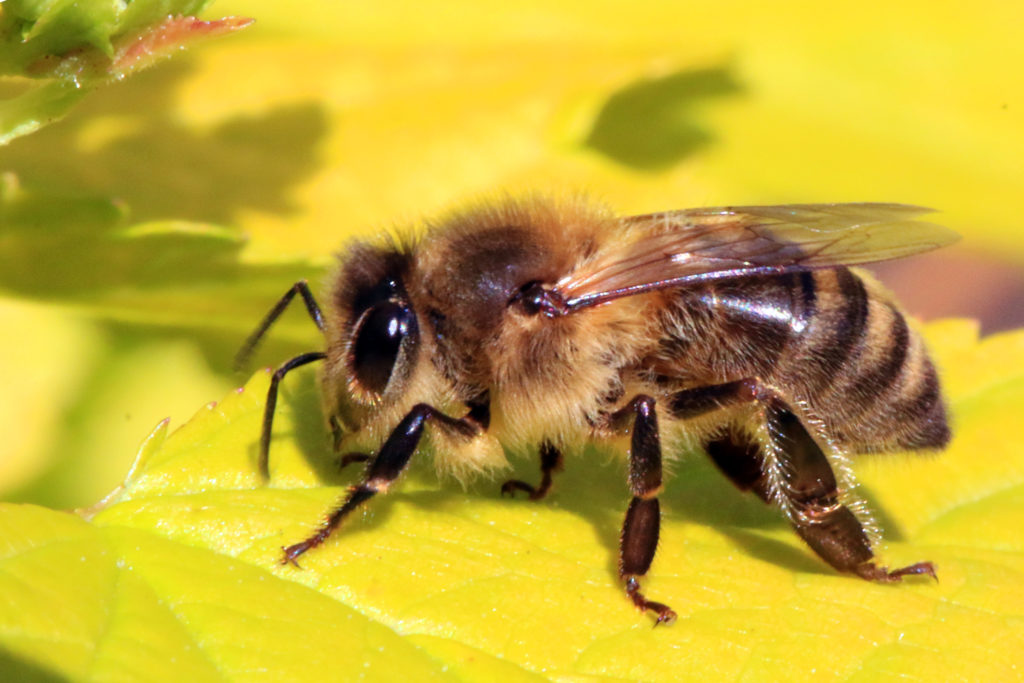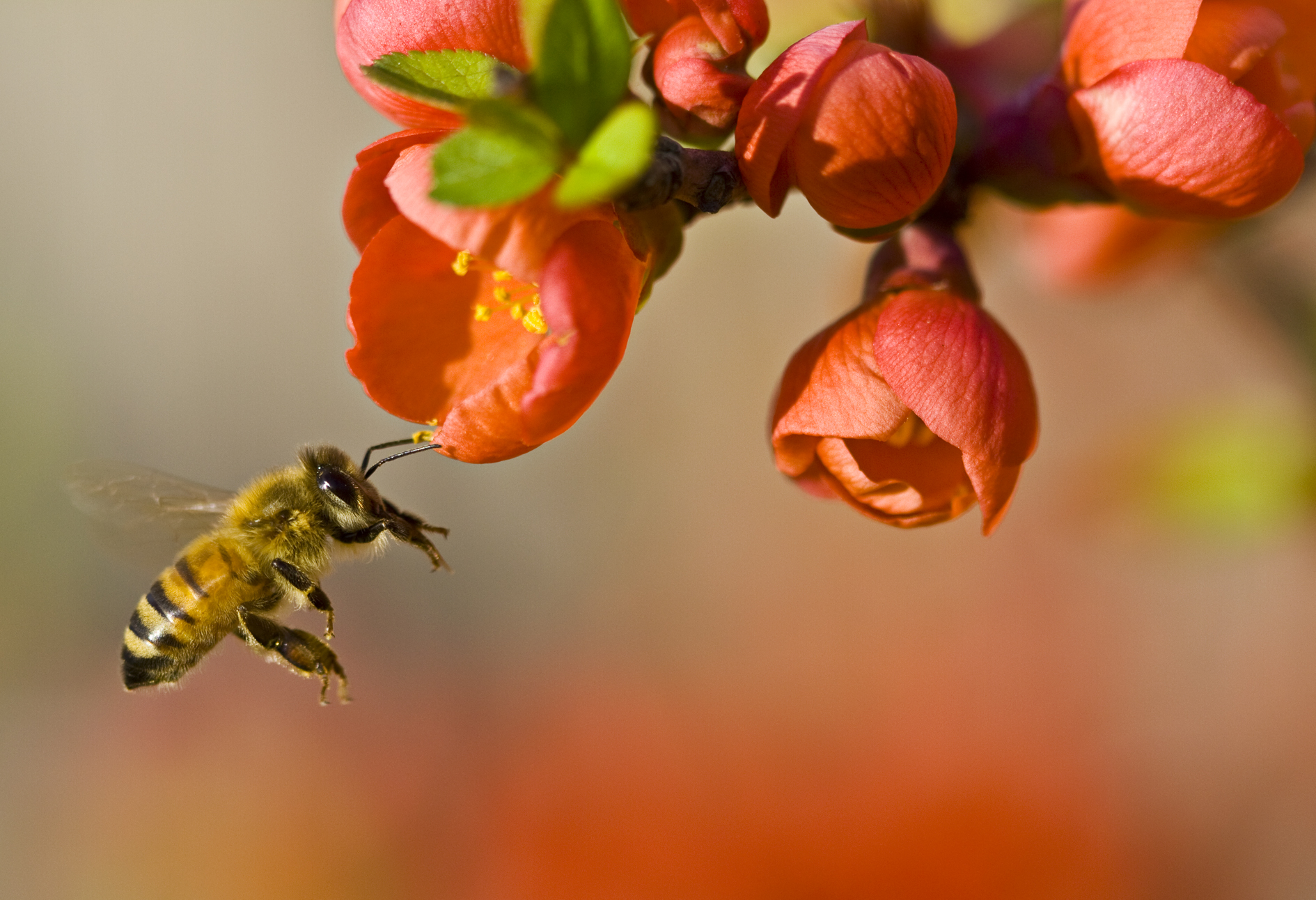Not many people realize that our food supply depends heavily on bees. This, among other things, is why bees are such incredible insects. Below, we list 27 weird and awesome facts about bees to get you more acquainted with this awesome creature.
1. There are 3 different kinds of bees in each beehive. They are the queen bee, the worker bee and the drone bee.
2. The queen bee is the only bee in the hive that can lay eggs. She communicates with her hive in a scent that’s filled with pheromones.
3. The queen bee is able to lay around 1,500 eggs per day.
4. Much like ants, all of the worker bees are female and they do all the work in the hive. The workers bees clean the hive, feed the offspring, feed the queen, pack pollen and nectar into cells, cap cells, build and repair honeycombs, keep the hive cool by fanning it and guard the hive with their lives.
5. Outside the hive, worker bees gather the next and pollen from followers, collect water and a substance called propolis.
6. Bees have two stomachs, the first of which is for eating. The second stomach is for storing the nectar that they have collected from flowers or water so that they can carry it back to the hive.

7. Drone bees are all the male bees in the hive. Their only job in the hive is to find a queen to mate with.
8. Drones will fly out to the mating area, in hopes of finding a queen bee to mate with. Unlike worker bees, male bees don’t have a stinger.
9. While worker bees do have stingers, which they use to protect the hive, as soon as they use it they die.
10. All bees have five eyes, two of which are compound eyes and three of which are very small ocelli eyes.
11. Apart from storing nectar, honey, pollen and water, bees use the honeycomb cells in their hive for raising their offspring.
12. They go through four stages of development. The first stage is the egg stage, followed by larvae, then pupae and the end is a fully grown adult bee.
13. Bees are the only insect in the world that make food which humans can eat.
14. After bees process the nectar in their stomachs, they regurgitate it back into the honeycomb cells. They then fan the cells with their wings in order to remove any excess moisture. After all of this, they’re left with honey.

15. Honey has natural preservatives within it and bacteria is unable to grow in it. For example, honey was found in various tombs in Egypt and it was still edible.
16. Bees have been on the planet for around 30 million years.
17. Honey bees are able to fly 24 kilometers per hour, or 15 miles per hour.
18. A bees wings beat around 100 times per second or 12,000 beats per minute.
19. Bees have a tongue that resembles a straw. It’s called a “proboscis” and they use it to suck up liquids and mandibles.
20. In the summer, an average beehive can have 50,000 to 80,000 bees.
21. A bee has to collect nectar from around 2 million flowers just to make 1 pound of honey. It takes 556 worker bees just to gather a pound of honey. Also, if you add up all of their distance traveled, vees fly more than once around the world to gather just a pound of honey.

22. The average worker bee makes about one twelfth of a teaspoon of honey in her entire lifetime.
23. Bees actually have 2 pairs of wings and each wing has tiny teeth on them so they can lock together when the bee is in flight.
24. Every third mouthful of food that you take is produced by bees actively pollinating crops. Without bees pollinating these plants, there would be a major scarcity of fruits and vegetables for humans and other animals to eat.
25. An average beehive can make about 100 pounds, or 45 kilograms of extra honey. Beekeepers make sure to only harvest the extra honey from the hive.
26. The average life of a honey bee during the working season is about 3 to 6 weeks.
27. 5 different products can come from a single bee hive. The products are: honey, pollen, beeswax, propolis and royal jelly.





9 Comments
Pingback:
December 25, 2017 at 5:16 pmPingback:
December 30, 2017 at 7:28 pmPingback:
March 1, 2018 at 12:18 pmPingback:
March 3, 2018 at 5:37 pmPingback:
March 4, 2018 at 6:25 pmPingback:
March 7, 2018 at 1:56 pmPingback:
March 9, 2018 at 1:29 pmPingback:
March 12, 2018 at 10:47 amPingback:
March 14, 2018 at 12:39 pm